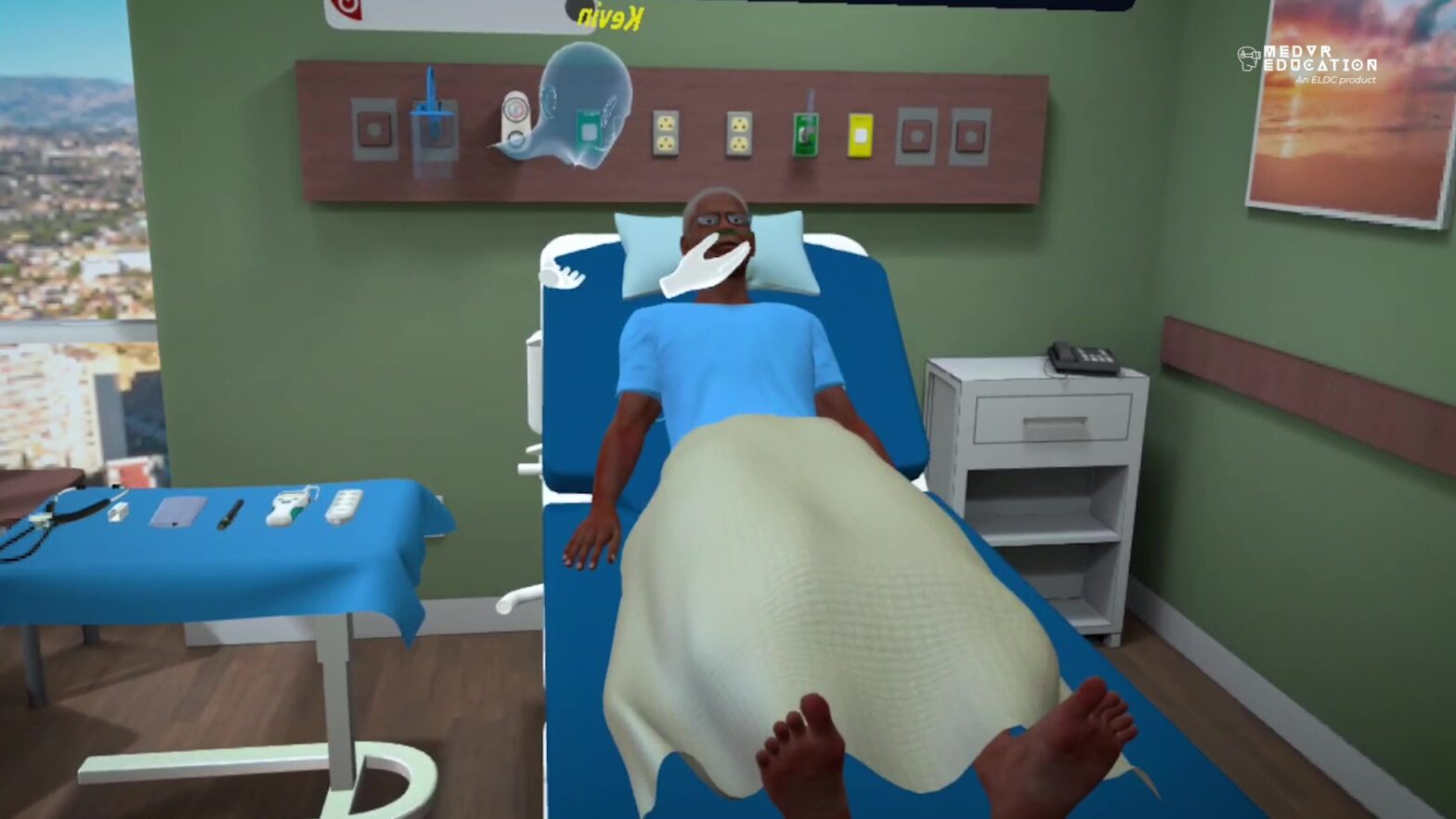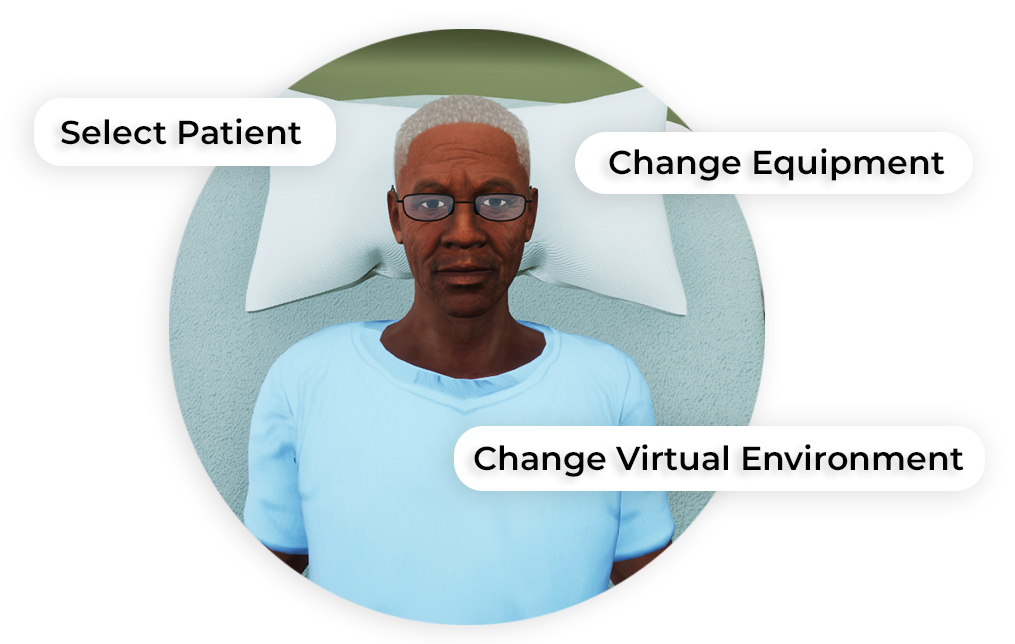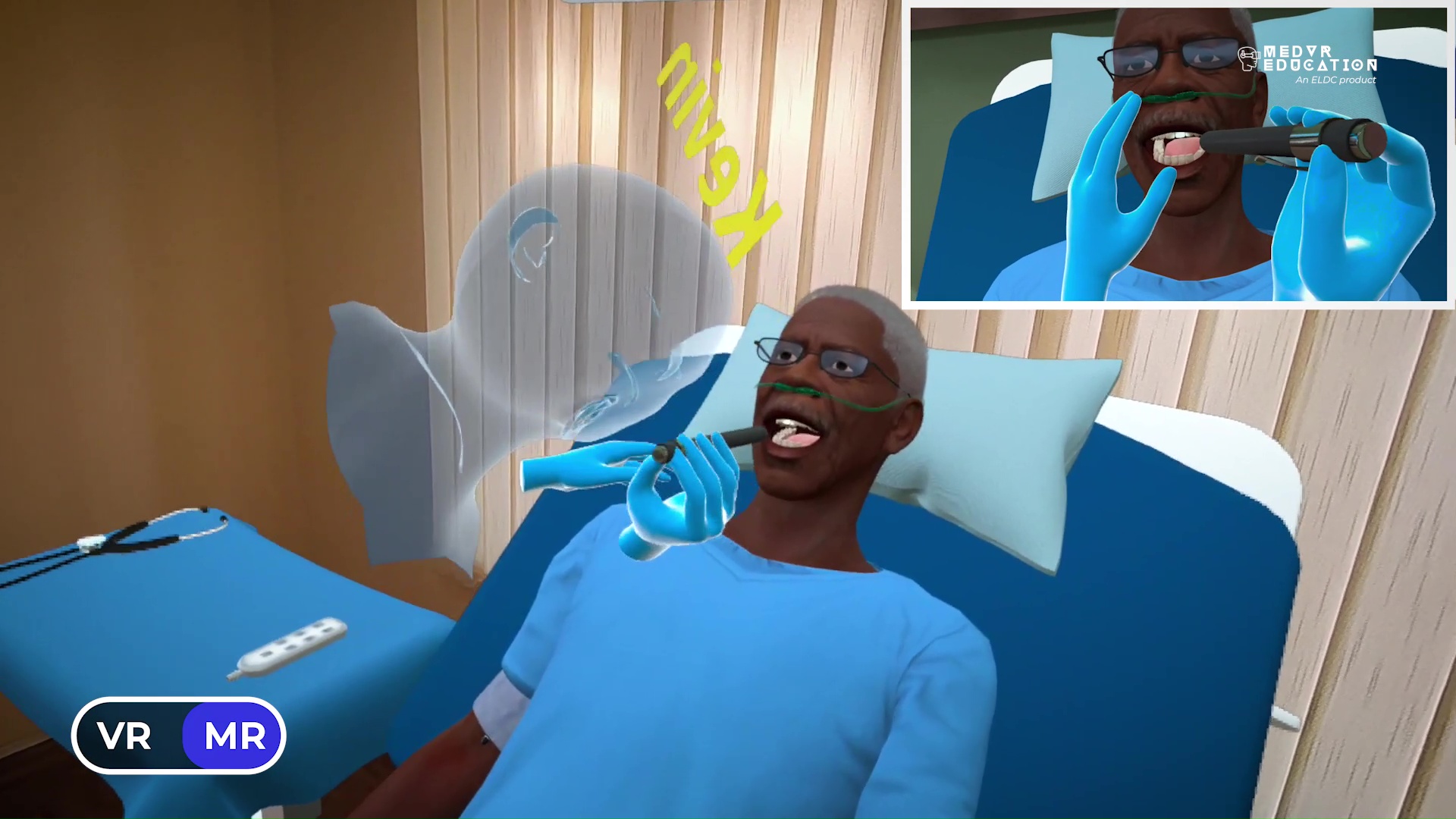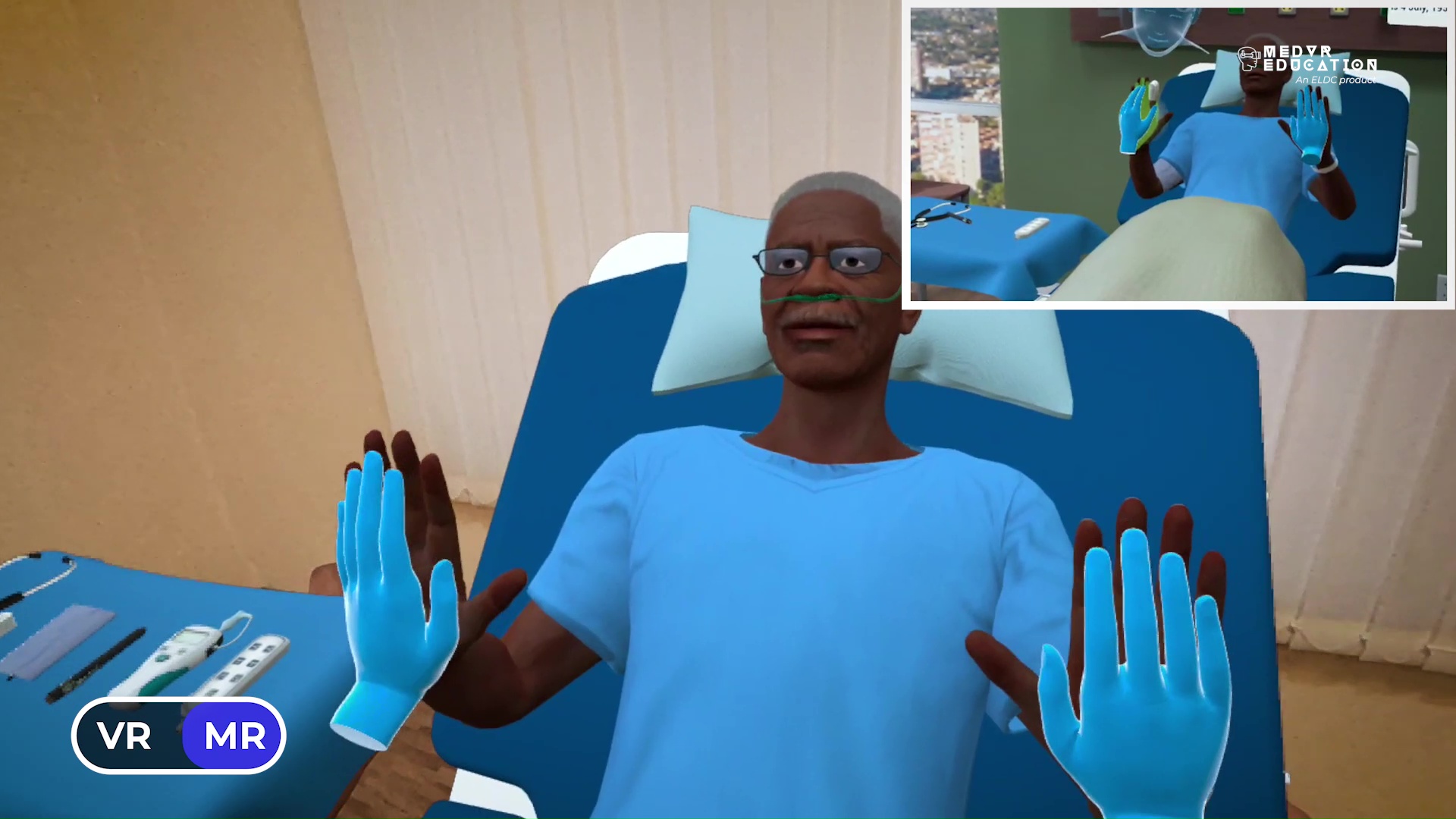Patient Rounding
Edward Brown is 71 years old and is admitted in hospital. His medical history shows congestive heart failure, hypertension, diabetes mellitus type 2, GERD, and hepatitis C. During a patient rounding, it is essential to ask him the correct questions and read his responses, both verbal and non-verbal, to get a proper understanding of his health condition.
This multiplayer VR session is designed to help healthcare professionals perform patient rounding duties with accuracy and efficiency.
- Demonstrating tasks needed to complete a nursing shift assessment
- Effectively enquiring about patient’s signs/ symptoms and pain level
- Interpreting vital signs for abnormal values
- Performing vital sign checks following clinically approved techniques
- Accurately listening to an apical heart rate and lung sounds
- Effectively testing for clonus and capillary refill

- Joint Commission Resources. (2018). Comprehensive Accreditation Manual for Hospitals: The Official Handbook (CAMH). Joint Commission Resources.
- Ignatavicius, D. D., Workman, M. L., & Rebar, C. R. (2017). Medical-Surgical Nursing: Patient-Centered Collaborative Care (8th ed.). Elsevier.
Customize Your Program
Get rid of the editor. Adopt in-VR customization.
MedVR Education is bringing to you in-VR customization that will enable you to put together your own simulations by making selections from a wide range of feature choices.
- Select patient from a diverse background
- Choose preferred virtual environment
- Configure patient vitals
- Define simulation duration
- Create patient history and train with AI-Humans
- Customize session-end debriefing
- …..many more to come

 AI Patient Assessment
AI Patient Assessment Natural Language Processing
Natural Language Processing Multi-player
Multi-player
Sessions Physics-based Interaction
Physics-based Interaction
Core Skills Training

Performing Patient Rounding
As part of this open scenario, the learner is expected to communicate with the patient and enquire about their health conditions. The learner will perform hand sanitization and check the patient’s vitals, educate the patient on basic information regarding call lights, bed and TV control etc., and perform a head-to-toe examination. The learner will go on to enquire about the patient’s medication, answer queries related to it and ensure the bed is positioned at a comfortable height for the patient to reach the call light. Before leaving the room, the learner will perform hand hygiene and thank the patient and caregiver.
All necessary affordances are made available to learners to help them complete the process with efficiency.
Debriefing
End-of-task debriefing to assess one’s performance, evaluate actions, and get the most out of the training. Examples of topics being touched upon in the debriefing include the following:
- Thorough patient assessment
- Completion of necessary steps
- Correct medication administration to patient
- Sequential completion of task
- Execution of time-sensitive tasks







